Microsoft turns 40: here's every milestone since 1975
Midlife crisis or a rebirth?

1975
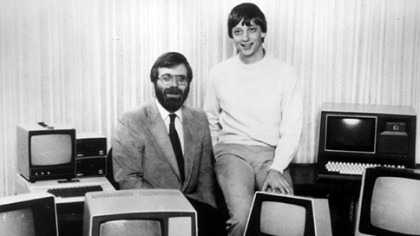
Although the date that Microsoft is generally considered to have started is April 4, 1975, the seeds were sown on the first day of the same year when the MITS Altair 8800 appeared on the cover of Popular Electronics and got the creative juices inside Messrs Allen and Gates going.
From there, they created BASIC, the following month, as the first computer programming language for a PC and sold it to MITS (Micro Instrumentation and Telemetry Systems) of Albuquerque, New Mexico.
This is where Allen and Gates moved to from Boston; Microsoft was co-founded at that very location (albeit under a different name) and by July, BASIC had officially shipped as v2 in both 4KB and 8KB editions. The long journey had begun.
1976
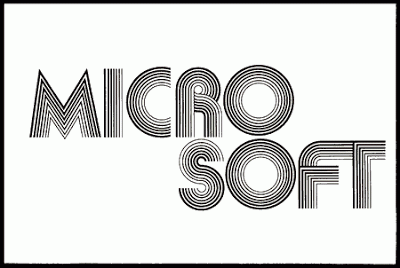
Everything was still bubbling under the surface over in Albuquerque when January 1976 swang round and the two intrepid computing geniuses had yet to come up with the company name. Even before that event took place later on in the year, Gates was already making waves.
He had brought up the issue of software privacy for the first time and admitted that "…nothing would please me more than being able to hire 10 programmers and deluge the hobby market." Gates followed that up on March 27 by giving the opening address at the First Annual Altair Computer Convention, which of course was held in Albuquerque.
We get back to Micro-Soft (or Microsoft) on November 1 when Paul Allen resigns his post at MITS to join the firm full time and the trade name Micro-Soft was registered with the Secretary of State of New Mexico on November 26.
1977
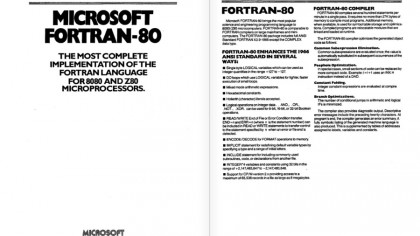
Things kicked up a gear in the year the first Star Wars film was released as Gates and Allen finally thrashed out an official partnership agreement on February 3.
Are you a pro? Subscribe to our newsletter
Sign up to the TechRadar Pro newsletter to get all the top news, opinion, features and guidance your business needs to succeed!
Microsoft celebrated that summer by debuting its second ever language product in the form of Fortran 80, which was priced at $500..
A significant event took place that following September when Microsoft received computers from Texas Instruments, Commodore and Radio Shack that all helped to push the computing market on to the next level.
1978
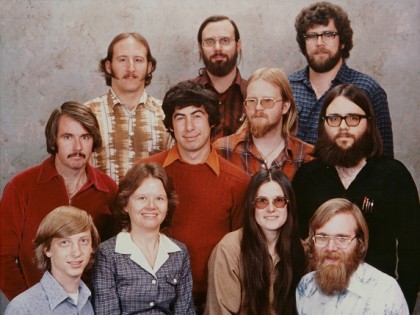
Microsoft dipped its toes into international waters for the first time when it opened up a Japanese office on November 1 entitled ASCII Microsoft, which would eventually become Microsoft Japan.
On the product front, the COBOL-80 saw the light of day and meant that all the elements that could be put inside a mini computer could also exist inside the microprocessor.
It followed this later in the year, with the November 7 release of the Edit-80, which was the first micro computer editor with random line access to floppy disk files.
The final release of the year on December 1 was the Macro-80 assembler for micro computers that was able to "assemble" over 1,000 lines a minute.
By the end of the year, Allen and Gates were hatching plans to move closer to home in Seattle after seeing their total sales mushroom to $1,355,000, resulting in Microsoft becoming a "million dollar company" for the first time.
1979
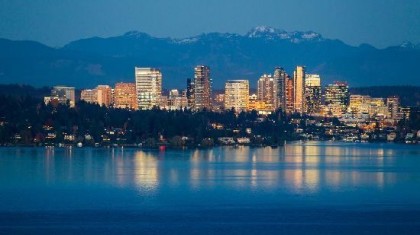
Allen and Gates weren't messing around when it came to relocation plans and officially moved their operations to Bellevue, Washington on January 1.
11 of the 13 employees came with them and not long after that, in March, the M6800 version of Basic got its release and the 8080 version of Basic became the first microprocessor to win the ICP Million Dollar Award.
1979 was also the year that Basic moved on to the Intel 8086 16-bit microprocessor and Gates credited it with their success in the business community thanks to its advanced capabilities.
Further international expansion was on the cards through the opening of the Vector Microsoft office in Belgium and by the end of 1979, Microsoft's sales had doubled to exceed $2,000,000.
1980
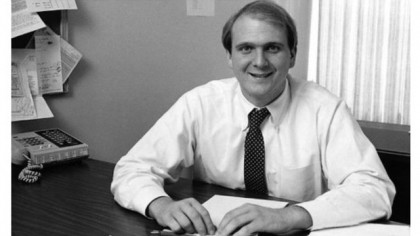
Steve Ballmer made his first entrance through Microsoft's doors on June 11, 1980 in a career that was to eventually see him become CEO.
The biggest news came in July when IBM approached Windows about a project codenamed "Chess" that became a new operating system and the foundation for what was to be MS-DOS. To build it they purchased the right to a simple OS from Tim Patterson at Seattle Computer Products to form the basis of the code behind MS-DOS.
Microsoft made more inroads into the Apple 2 by releasing the Z80 SoftCard that plugged into the computer to allow users to run CP/M applications and enable more business applications to be run.
Another big software announcement came on August 29 with the release of a portable Unix-based OS for 16-bit microprocessors known as Xenix OS, which would eventually become home of the first version of Microsoft Word.
Sales had by now reached $8,000,000 and it showed the huge progress made in the first five years.
1981
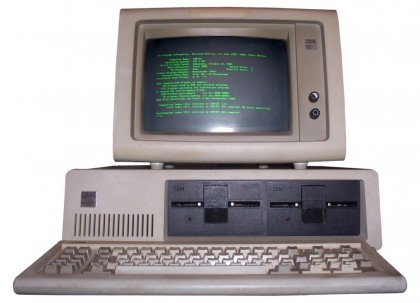
Things got even more momentous for Microsoft in 1981 as a June 25 restructure saw the company become an incorporated business in Washington with Bill Gates taking the role of president and chairman of the board, and Paul Allen executive vice president. Microsoft Corporation, Inc. was born.
Not long after that on August 12, IBM began shipping the IBM PC that ran MS-DOS v1.0 plus Basic, Cobol and a raft of other Microsoft products thus flinging it into the consumer OS market. It all meant by the end of 1981 that sales reached $17,331,000.
1982
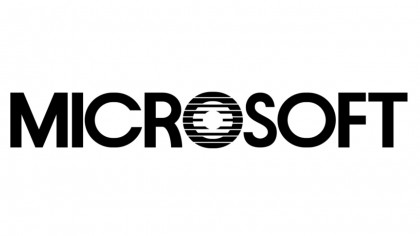
Microsoft's international aspirations took another shot in the arm when it launched Microsoft U.K. Ltd. on March 24 and in the process it was incorporated as the firm's first international subsidiary. It followed that up with a new logo but that wasn't the only big change afoot. On June 25, James A. Towne was installed as president and COO and he took over all responsibilities from Bill Gates, who assumed the role of executive vice president handling all development activities.
Microsoft's short-lived spreadsheet program known as Multiplan v.1 for MS-DOS arrived for the first time this year as well as Typing Tutor II for the Apple II, Softcard Premium and there was even a first outing for Flight Simulator on the MS-DOS.
The one piece of upsetting news came when Paul Allen was diagnosed with hodgkins disease, which would result in him leaving the firm in 1983. Year end sales rocketed to $24,486,000 (around £16,653,000, or AU$32,000,000) and to keep all 220 employees in touch the Microsoft Local Area Network (MILAN) was fully rolled out to provide interaction and simplified email communication.
1983
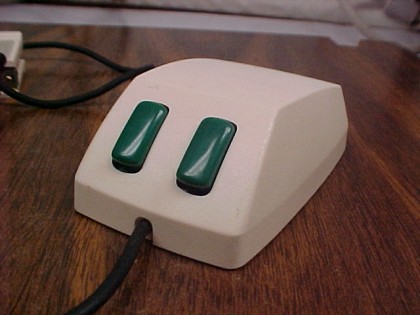
February 18 was a sad day as Paul Allen said his last goodbyes and departed his position as executive vice president but stayed on the board of directors. That in no way scuppered Microsoft's ongoing growth and MS-DOS 2.0 was introduced on March 9 followed by the Microsoft Mouse peripheral on May 2 that was designed to work with the IBM-PC and any other PC based on MS-DOS.
Microsoft also created its own home computer, the MSX, which ran on its own version of DOS (MSX-DOS). This was followed by a glut of other manufacturers that released variations of the IBM-PC and because of an agreement it had in place with IBM, it could licence its QDOS derivative to the likes of Compaq and Eagle Computer.
Two of the programs synonymous with the history of Microsoft, Word and Windows, both reared their heads for the first time in 1983. Word for MS-DOS 1.00 saw a full release and was given away as a free demo to subscribers of The PC World Software Review. Windows, meanwhile, was shown off on November 10 as an extension of MS-DOS but wouldn't actually ship for another two years and led to people calling it vaporware. Another interesting footnote was the launch of Microsoft Press, a book publishing section specialising in computing.
1984
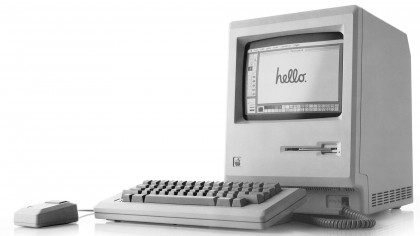
Microsoft and Apple used to be buddies once upon a time and they firmed up that on the Apple Macintosh computer that was released on January 24. It included a smooth Macintosh interface combined with Microsoft's suite of software that included Multiplan, Chart, Word, Files and Basic.
IBM chose both XENIX and MS-DOS for the IBM PC AT, its next personal computer, on August 14 and following that, on September 9, Microsoft laid down the groundwork for its move to Redmond in a meeting with city officials for a plot in the Evergreen Place development.
It also formed a hardware and peripherals division and the first two Microsoft Press titles in the form of Cary Lu's "The Apple Macintosh Book" and Peter Norton's "Exploring the IBM PCjr Home Computer" were released. With year end sales of $97,479,000 (around £65,808,000, or AU$127,947,000) and almost 1,000 employees before Windows was even released, Microsoft was certainly doing something right.
1985
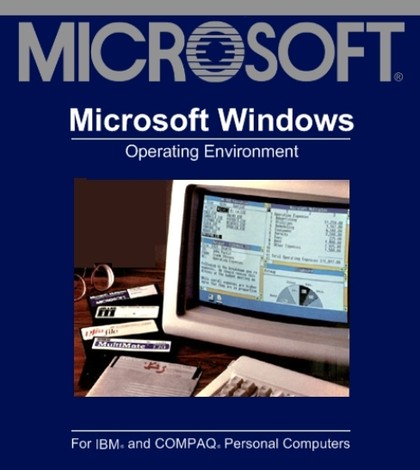
If Microsoft could rank its years in order of influential releases then 1985 would come out near the top. That's because it was the 12-month period when the long two-year wait finally came to an end and Windows 1.0 got its release. The delays were the least of the complaints about the new OS with users pulling Microsoft up about everything from its reliance on the Mouse, which was still in its infancy, to the system requirements needed to run it.
1985 was also the 10th anniversary of the company and Microsoft celebrated that by breaking ground on its new headquarters in Redmond, Washington, which would be completed the following year. It signed yet another partnership with IBM, this time to develop operating systems and various other software products. Excel for Macintosh also saw the light of day for the first time and the fiscal year sales for 1985 hit $140 million (around £94 million or AU$183 million).
1986
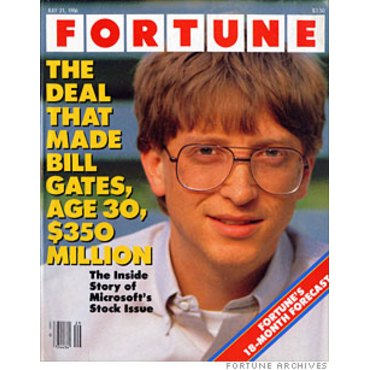
Things were going pretty well for Microsoft, so well in fact that Prince Charles decided to make a visit to the Microsoft Showroom at the Infomart in Dallas. Shortly after that Royal appointment the company went public at $21 (around £14.24 or AU$27.55) per share and the initial public offering raised the company a cool $61 million (around £41.3 million, or AU$80 million).
Bill Gates hit the cover of Fortune magazine in July and by the end of the year Microsoft had shipped Excel, Word, File, Multiplan, Chart and Works for the Macintosh plus a veritable smorgasbord of other programs for DOS and other systems. Microsoft also made the important move to bring MS-DOS extensions that support the use of CD-ROM drives with PCs for the first time.
All of these moves went on inside the company's plush new HQ in Redmond and Steve Ballmer was also made to swim the first "translakebillg" after losing a challenge to the MS-DOS 5 team to complete their bug fixes by September 1.
1987
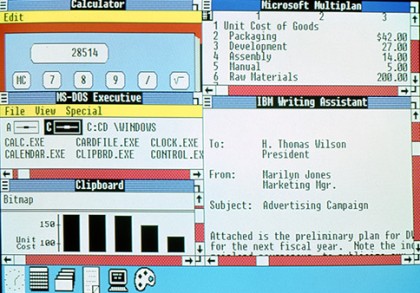
This may forever be known as the year of the soap for Microsoft after it released the "New Mouse" on August 3. It was nicknamed the "Dove Soap Bar" thanks to its appearance and was plug compatible. Microsoft released some of its best known software for the first time in 1987 including Works for DOS bringing productivity onto the next level, Excel for Windows and PowerPoint, courtesy of its acquisition of Forethought.
Windows 2.0, released on December 9, included a range of improvements to the user interface, more keyboard shortcuts, VGA graphics and was the final version that did not require a hard disk drive to function.
The landmark joint development agreement signed by Microsoft and IBM two years previously produced its first offspring in the shape of OS/2 on April 2, something that, as you will see, caused controversy in the next decade.
Microsoft also introduced its first ever CD-ROM based offering in the shape of the Microsoft Bookshelf reference collection that included 10 different titles designed to help users get the most out of their MS-DOS system.
1988
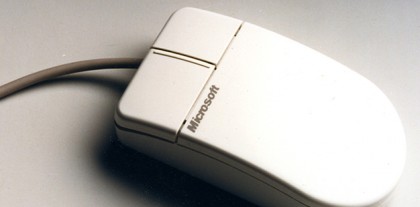
In terms of sales 1988 was a very big year indeed for Microsoft as the fiscal year-end total topped the half billion dollar mark for the first time and stood at a staggering $590 million (around £394 million, or AU$758 million). The influential Microsoft SQL Server was outed for the first time on January 13, which was created alongside Ashton-Tate and took the form of a database server software product for LANs based on a system licensed from Sybase.
A long court battle between Microsoft (and Hewlett Packard) and Apple over copyright infringement in Windows 2.0 began on March 17, Apple accusing Microsoft of copying the look and feel of the Macintosh OS, and it ended up lasting for four whole years.
The Microsoft Mouse peripheral topped a million sales for the first time after doubling the units sold in just a year and the Microsoft OnLine technical support line began offering two-way electronic support for users.
1989
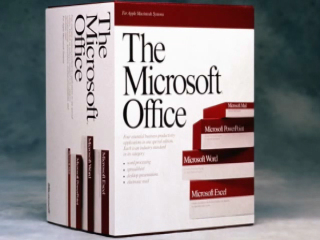
Office finally made its debut right at the end of the 80s when on August 8 Office for the Macintosh was released. It included Word 4.00, Excel 2.20, PowerPoint 2.01 and Mail, in a lineup that remains almost unchanged today. In addition to that, promotional activity behind Excel for Windows gathered pace and special offers included an exchange program for Lotus 1-2-3 users, free evaluation copies and seminars across the country explaining how to use Excel.
Microsoft Mouse went from strength-to-strength as the peripheral doubled its sales volume to two million by June 26 and showed just how important it was becoming to Microsoft users. Steve Ballmer continued his ascent to the top of the company by being promoted to senior vice president from his original position as VP of systems software and Microsoft delivered a complete version of MS-DOS in Chinese.
1990
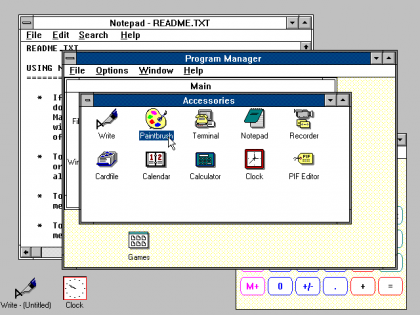
Windows took another huge leap into the consciousness of the worldwide computing community after version 3.0 was released at a star-studded event in New York City. It brought with it a slightly updated user interface, and a handful of new applications. It ended up selling 100,000 copies in just two weeks, was the beginning of the end for OS/2, and the Windows version that finally persuaded third-party app manufacturers to build for Windows.
The product's early success was like an early 15th birthday present, but the real gift came on July 24 when it became the first PC software firm to exceed $1 billion in sales in one year by posting sales of $1.18 billion (around £789 million, or AU$1.51 billion).
Office for Windows including Excel, Word and PowerPoint was finally made available on October 1, over a year after it first landed on Macintosh machines. All of these new products needed a place to be sold and to that end the Microsoft Company Store was opened on July 2.
Bill Gates had another influential year in which, as well as introducing Windows 3.0, he gave a keynote at Fall/COMDEX in Las Vegas on November 12 entitled "Information At Your Fingertips" that was his vision for the future of the PC market.
1991
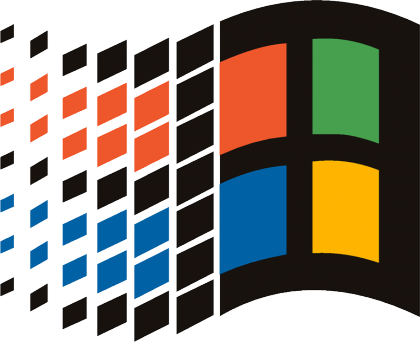
Redesigning Windows packaging was on the cards for most of the year as the familiar "Windows flag" landed in black and white on February 1 before being given its splash of four colours on November 1. This was to adorn Windows products from there on in and, staying with Windows, huge numbers of software developers were now building apps for Windows 3.0. Data from the Software Publishers Association shows that year-end sales in 1990 increased by 157% in the US and Canada.
Excel 3.0 for Windows showed that it was becoming the spreadsheet program of choice by shipping 1.5 million units worldwide by August and posting a 40% increase in market share.
Whilst Windows' stock was rising, OS/2 was dying a slow death as Bill Gates forwarded a company memo to employees on May 16 that announced the OS/2 partnership was over and efforts would be focused on Windows and Windows NT. This angered the many developers that had hedged their bets on OS/2 instead of Windows.
1991 also saw the launch of Microsoft Research, Visual Basic (May 20), the BallPoint Mouse (March 11) designed specifically for use with laptop PCs and MS-DOS 5.0 (June 11) along with Steve Ballmer's infamous 'Streets of Microsoft' marketing video to go with it.
1992
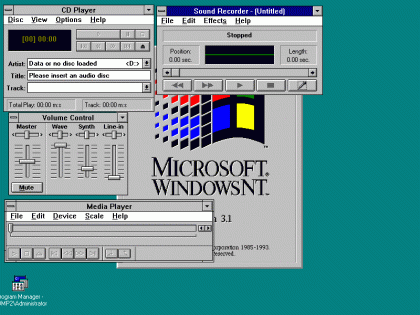
Windows made its TV debut as Microsoft ramped up it marketing activities to include TV ads to improve adoption of the product just in time for Windows 3.1 to start shipping on April 6. It worked as Windows 3.1 sold some three million copies in its first two months. Customers were attracted by the higher memory, new icons, enhanced GUI, vast array of fonts and a lot more besides.
Another version of the popular OS in the form of Windows NT was introduced for the first time on July 6 at the Win32 Professional Developers Conference where every attendee received a free Win32 API preliminary SDK for Windows NT, which contained a copy of the early release.
Microsoft agreed to a number of partnerships with Intel that included a new beta specification called DV MCI (the digital video command set of MCI), which expanded the media control interface (MCI), and the Digital Video Computing agreement that looked at the next wave of personal computing.
Intel, R.R. Donnelley & Sons, and Ziff-Davis Publishing Company got together with Microsoft to launch the first ever Windows Hardware Engineering Conference on February 18, which is still going strong over 20 years later.
Microsoft won its initial case against Apple for copyright infringement in a court in Northern California on April 15. It meant many of the visual displays used in Windows 2.03 and Windows 3.0 weren't protected under Apple copyrights.
The popular database program Access was released for the first time towards the end of the year and Microsoft again saw fiscal year-end sales for 1992 hit a new high this time ending up at $2.75 billion (around £1.83 billion, or AU$3.54 billion).
1993

Fortune magazine liked what Microsoft was doing enough to name it 1993's 'Most Innovative Company Operating in the US' and in the same year Windows became the most widely used GUI OS on the planet. That milestone was passed on April 14 after the amount of licensed users hit 25 million and Excel 4.0 then became the world's top selling spreadsheet program on August 24 after shipping over five million units worldwide.
Apple v Microsoft made its final journey through the US courts with Microsoft finally winning the copyright court case that kicked off in the late 80s and Windows NT, which was outed in 1992, saw its first release on July 27. Elsewhere, school kids everywhere didn't know what was about to hit them as the Encarta encyclopaedia was released for the first time on March 22.
On the hardware front it released a key specification that was a part of the Plug and Play architecture on October 21 and by the end of the '93 fiscal year sales had hit $3.752 billion (around £2.53 billion, or AU$4.9 billion).
1994
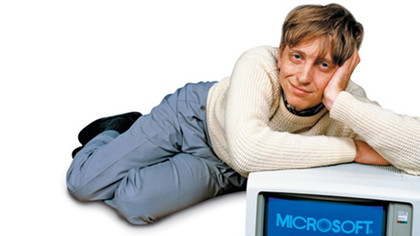
By Microsoft's standards, 1994 was a particularly quiet one. One release, on May 17, was the architecture for its new software solution that was codenamed "Tiger" and allowed continuous delivery of media including audio and video. Other than that the Microsoft Plus support program came out on January 31 in order to try and ramp customer satisfaction with products up a level.
1995
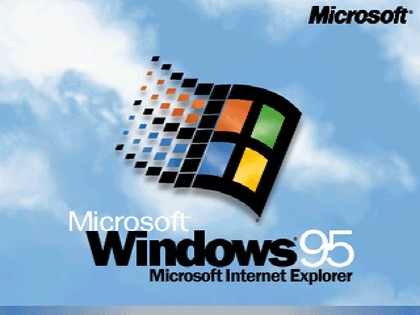
If 1994 was considered a quiet one for Microsoft then they certainly made up for that in 1995 with the release of Windows 95. The most advanced GUI OS by Microsoft so far brought the start button into the consciousness of PC users everywhere and shipped seven million copies in just five weeks.
One thing it didn't include was a web browser yet Microsoft addressed this soon afterwards by licensing a browser from Spyglass that became the free Internet Explorer application. Under the terms of an agreement with Spyglass, Microsoft was supposed to pay royalties for every copy sold and ended up paying nothing due to the fact it was free.
Bill Gates admitted on May 26 that Microsoft had failed to recognise the importance of the internet thus mentioning Netscape as an example of a new breed of competitor. It acted fast to address this by releasing Internet Explorer, as mentioned above, and brought its online services under the MSN banner. In three months it had 525,000 members.
Other releases included the first Schedule+ for Windows, SQL Server 6.0, Office 95, and the biggest flop of them all Microsoft BOB. The latter was a GUI for novice users and was discontinued just a year later in 1996 due to poor sales and is considered one of the worst products Microsoft has ever produced.
1996
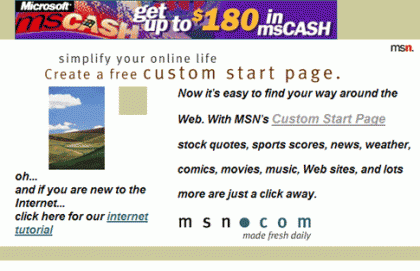
Microsoft made its move into the world of TV by launching a new 24-hour cable channel called MSNBC in partnership with NBC on July 15. There was important news for system administrators everywhere as the influential Exchange Server became available for the first time on April 2 thus providing secured messaging services and it is something that lives on to this day.
Microsoft's continued success in the fledgeling internet market was illustrated by MSN hitting one million members in 190 countries barely seven months after launch. It agreed to a partnership with AOL on March 12 that brought Internet Explorer onto the AOL client installed on Windows 95, 3.1 and Macintosh. Expedia, meanwhile, opened its doors on October 22. Finally, Microsoft reached an agreement with VeriSign on August 8 to allow the secure downloading of software.
As the year drew to a close Windows CE, a version of the OS that was open and scalable, got its release and brought the OS to smaller form factors.
1997
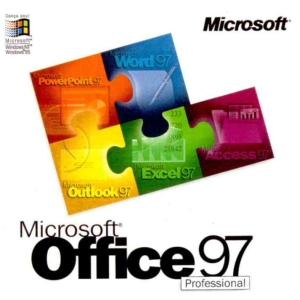
The year kicked off with the release of Office 97 on January 16 that offered the full range of productivity options but also began to integrate itself with web applications for the very first time. On the visual side of things Microsoft made some big moves in 1997 by acquiring WebTV Networks for $425 million (around £286 million, or AU$557 million) in cash and stock, and it invested $1 billion (around £670 million, or AU$1.3 billion) into Comcast to help it deliver high speed data and video services via its cable network.
Apple and Microsoft finally began to play nice by 1997 as Steve Jobs and Bill Gates reached a product and technology development agreement between them that included versions of Office, IE and other MS tools for Macintosh. It also included a bundled version of Internet Explorer with Mac OS, a patent cross-licensing agreement for leading Mac technologies, and a $150 million (around £101 million, or AU$196 million) investment in Apple by Microsoft.
Microsoft began to further build its online arsenal by bringing its DHTML protocol into the market that was eventually adopted by scores of companies, its internet gaming zone went from strength-to-strength, and it ended the year by purchasing Hotmail on December 31.
1998
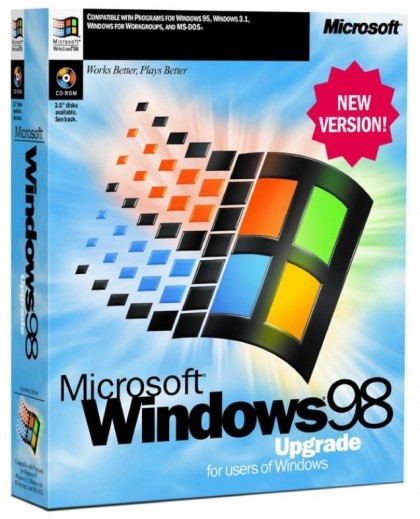
Microsoft's legal wrangling came to the fore in 1998 as the US Department of Justice plus 20 state attorneys chose May 18 as the date to file a suit accusing Microsoft of abusing its position and thus becoming a monopoly. There was a further action by the US Department of Justice in October that saw Microsoft sued for violating a 1994 consent decree by forcing computer makers to include Internet Explorer as part of a Windows installation.
Windows 98 became the next major release in the popular OS family on June 25 and shipped with various enhancements such as increased support for USB connectors, networking improvements, and a higher level of web integration than ever before. Also on the product front it released the first version of Windows Media Player on July 7 alongside NT Server, NetShow Service and NetShow Theater Server.
Towards the end of the year, MSN Hotmail became the world's largest email provider on December 1 when it passed 30 million members.
1999
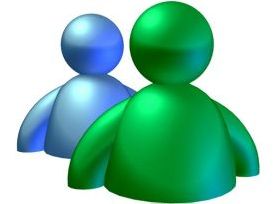
Newly appointed president Steve Ballmer presented Office 2000 on June 7, which was a key part of Microsoft's "Knowledge workers without limits" vision.
Its online activity kicked up a level with the release of Internet Explorer 5.0 on March 18, followed by MSN Mobile's first outing that meant MSN.com users could sign up to receive information to pagers or mobile devices. The Passport "wallet" service went live at 24 merchant sites on November 23 and 1999 was also the year that gave birth to the iconic MSN Messenger program that came to define instant messaging for years to come.
In the court room, on November 5 US District Judge Thomas Penfield Jackson issued his initial findings in the antitrust case, finding that Microsoft held a monopoly and used it to harm both consumers and competitors. The mediation then began on November 30 to work out whether the two sides could settle.
2000
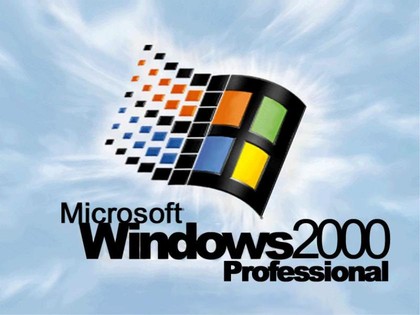
Microsoft was back at the mercy of the courts on April 3 when a judgement was handed down in the United States v. Microsoft case that branded the company an "abusive monopoly". That was followed by a court order on June 7 that forced it to split into two distinct units (something that was eventually overturned on appeal).
Businesses got a welcome update in the form of Windows 2000 on February 17 that brought with it improved stability at the same level as Unix and replaced Windows 95, 98, and NT Workstation 4.0 on all enterprise machines. It also added improved reliability, ease of use, internet compatibility, and support for mobile computing.
The ill-fated Windows Me also got its release on September 14 and, despite including a number of new features, it had installation problems plus other issues that saw it widely pilloried. It was the final one based on Windows 95 and all those after this were built on the Windows NT and 2000 kernel.
Ballmer finally got the CEO gig from Gates, who became known as chief software architect, and he also formed the Bill & Melinda Gates Foundation that kicked life off with an initial contribution of $28 billion (around £18.8 billion, or AU$36.7 billion).
2001
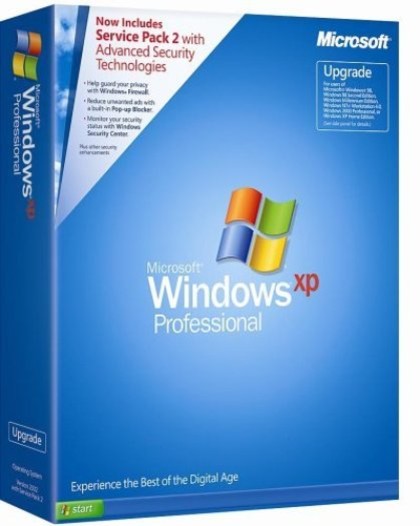
Things took on a distinct shade of green and blue as Windows XP and Office XP became household names as part of a new OS released less than 12 months after Windows Me. It hit retailers on October 25 and was built on the Windows NT kernel thus relying even less on MS-DOS. It was the first version of Windows that introduced product activation as standard in order to try stop it being plagued by software piracy. It did manage to hang around for a while longer than many of its predecessor and sold 400 million copies in its first five years, not reaching its end of life until April 8 2014.
Windows had a habit of being dogged by heavy delays in the early days and those delays came back to haunt it in the 00s in the form of 'Longhorn', which was first launched in May 2001 but wouldn't become Vista until late 2006.
It also made its first tentative steps into console gaming through the original Xbox. It ended up selling 24 million units all told, which was way short of the PlayStation 2's 136 million but more than the Nintendo Gamecube's 21 million units. The Xbox, when released on November 15, offered the first complete online gaming experience of any console and is the precursor to the two consoles that followed. Even with that release, net income dipped by 22% to $7.35 billion (around £4.95 billion, or AU$9.64 billion).
2002
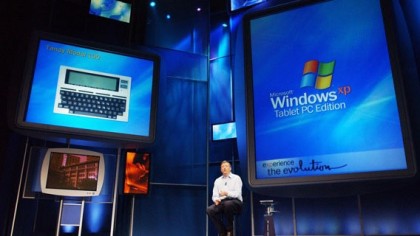
Microsoft kicked off the year with a landmark for the code development community by releasing Visual Studio .NET at VSLive in San Francisco on February 13. It brought with it the C# programming language. It followed that up on July 1 with the release of Visual J# for Java developers to construct applications and services on the Microsoft .NET framework.
If you thought the Apple iPad was the first tablet PC then think again. Microsoft unveiled the Tablet PC on November 7, which was a range of pen-enabled slates that ran on Windows XP Tablet PC Edition and Compaq was one of the first to manufacture one.
Courtroom battles were another fixture of Microsoft's year as a new trial began on March 18 between Microsoft and the US states that didn't accept the terms of a settlement agreed by the US DoJ in the previous year. It also came to a settlement with the US Federal Trade Commission in August to increase the security and privacy of Passport after being accused by privacy groups of failing to firm up the security.
Microsoft continued to chip away at AOL by unveiling MSN 8 in Central Park on October 23 yet none of this could arrest a decline in net income of 28% to $5.35 billion (around £3.6 billion, or AU$7 billion).
2003
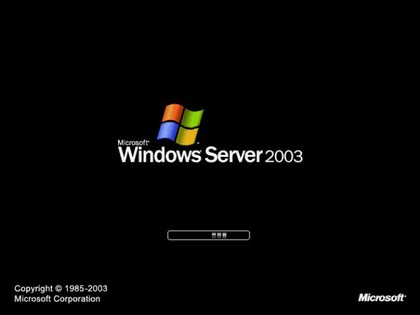
On August 19 the company announced another new version of its popular productivity suite in the form of Office 2003 that brought with it a new logo and the presence of both InfoPath and OneNote for the first time.
Windows Server 2003 also first saw the light of day on April 24 as part of the Windows Server System that replaced all .NET Enterprise Servers and encompassed a dozen Microsoft server software offerings.
Pocket PC was rebranded as Windows Mobile come June 23 and came in four different editions: Premium, Professional, Smartphone, and Phone. It was powered by Windows CE and included a handful of enhancements such as Bluetooth device management, MIDI file support, and the Jawbreaker puzzle game.
October 9 was when Microsoft's first ever Worldwide Partner Conference took place at the Los Angeles Convention Center and the year as a whole saw net income improve by 29% to $7.53 billion (around £5 billion, or AU$9.8 billion).
2004
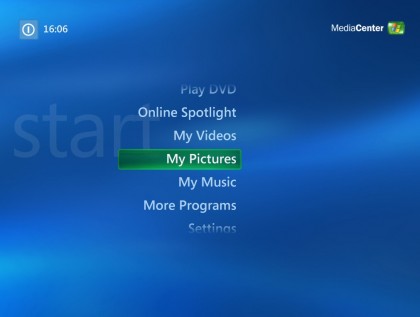
Windows XP took on two different forms in 2004. On August 11 Windows XP Starter Edition kicked off a pilot program in five countries in the developing world and it took the form of a basic version of the OS for first-time desktop PC users. It followed that by announcing Windows XP Media Center Edition 2005 on October 12, which was built around the popular media client and could play and record TV shows and turned your TV into a PC driven media centre.
On March 15, the Shared Source Initiative reached one million participants and allowed customers, governments, partners and academics to share in Microsoft's source code. Microsoft ended the year in a charitable way by pledging $3.5 million (around £2.36 million, or AU$4.59 million) to the Indian Ocean tsunami fund.
2005
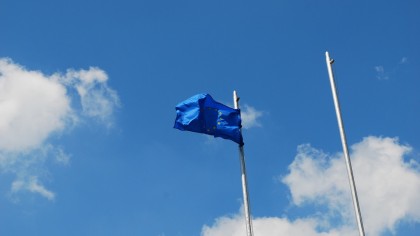
Microsoft ended up in court once more when the European Union brought an anti-trust case against the company for abusing its dominant position in the continent's market. On March 30, the decision was handed down and it saw Microsoft fined €497 million (around £359 million, $533 million, or AU$700 million). In addition it was ordered to hand over the details of certain protocols to its competitors and had to produce a new version of Windows XP (XP Home Edition N) that came without Windows Media Player.
A similar judgement was handed down in South Korea where it had to pay $32 million (around £21 million, or AU$42 million) and produce different versions of Windows, one including Windows Messenger and Media Player, and one not.
On the product front, MSN Search was launched on February 1 in 25 markets and 10 languages with image search initially powered by Picsearch. Its second foray into gaming, the Xbox 360, was detailed during an MTV special and by November 22 it was released in limited quantities worldwide. At the last check it had sold 83.7 million units. There were also 64-bit versions of Windows Server 2003 and Windows XP Professional released, plus Visual Studio 2005 got its first outing in 2005.
2006
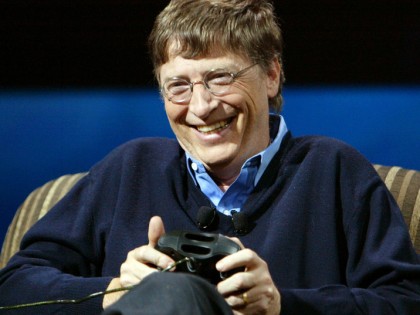
Bill Gates started to vastly change his role at Microsoft on June 15 when he detailed a two-year plan to transition away from his everyday role as chief software architect. Under the plan, Roy Ozzie, then company CTO, took over the chief software architect role immediately, however, Gates did hang onto the company chairmanship, headed up the board of directors and advised on key projects.
Microsoft became the last of the "big three" search companies (alongside Google and Yahoo) to release a pay-per-click ad offering. adCenter allowed it to move away from the Overture and Yahoo based system it had been using.
The European Commission fined Microsoft another €280.5 million (around £202 million, $300 million, or AU$394 million) on July 2006 for failing to fully implement the antitrust decision handed down in 2004 and it amounted to some €2 million (around $2.5 million, or £1.4 million) a day.
At home in Redmond, Washington it poured some $1 billion (around £670 million, or AU$1.3 billion) into further expanding its campus so that it covered an extra 1,100,000 square feet. MSN Messenger officially became Windows Live Messenger on June 19 when the official release of version 8.0 was confirmed as part of the wider Windows Live rebrand.
2007
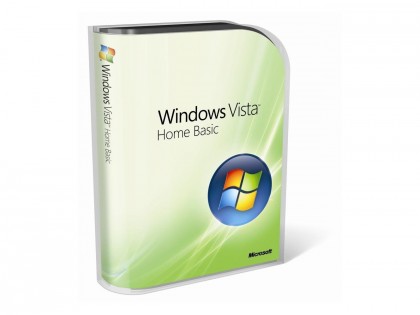
Vista became Microsoft's next operating system on January 29 when it was made available worldwide and within a month had sold some 20 million licenses, which was double the amount shipped by Windows XP in its first month back in October 2001. Another of Microsoft's core product offerings saw an update just a day later when Office 2007 brought a refreshed UI known as the 'Fluent User Interface' that introduced ribbons plus an Office start menu.
Microsoft lost its appeal against the European Commission antitrust case on 17 September meaning the €497 million (around £359 million, $533 million, or AU$700 million) fine was upheld in addition to the requirements about server interoperability and the bundling of Windows Media Player. It even had to pay 80% of the EC's legal costs.
2008
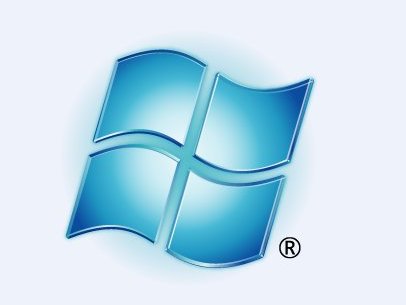
This will always be remembered as the year that Microsoft tried and failed to acquire Yahoo! for a reported $47.5 billion (around £31.5 billion, or AU$62.3 billion), which caused significant ructions at both companies.
Bill Gates made good on his promise by stepping down from his position on June 27 in order to concentrate more on his charity work and with the departure came a leaving video starring the likes of George Clooney, Al Gore and Bono.
A significant security flaw blighted Internet Explorer 7 on December 16 when as many as 10,000 sites were thrown open to an exploit that allowed hackers to steal personal information from any website that a user visited.
On the product front, Windows Azure was launched for the first time on October 27 that brought it into the world of internet-based or cloud storage. There was also the first releases of both Windows Server 2008 and Visual Studio 2008, and Windows 7 got its first reveal on October 28 to show what a post-Vista world will look like.
2009
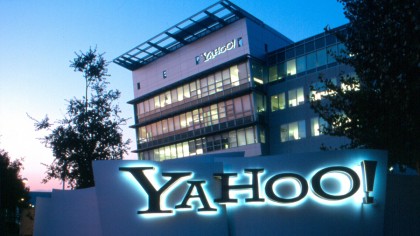
The year started off with the disappointing news on January 22 that 5% of its total workforce (around 5,000 people) would be laid off over the next year-and-a-half to try to reduce operating costs by $1.5 billion (around £1.01 billion, or AU$1.97 billion) in the fiscal year.
Search kicked on in 2009 as Microsoft finally got its deal with Yahoo on July 29. They signed a 10-year deal that meant Yahoo's search engine was replaced by Microsoft's newly rebranded Bing search engine and Yahoo's advertising sales experts became part of Microsoft. The deal saw Yahoo take 88% of revenue from search ad sales for the first five years and the rights to sell ads on Microsoft sites.
In August, Microsoft was back in court and this time lost a patent case against I4i that means it had to change Word due to a custom XML feature being present that infringed on a patent. The terms said that "any Microsoft Word products that have the capability of opening .XML, .DOCX or DOCM files (XML files) containing custom XML," had to be withdrawn from sale.
A long standing case between the European Commission and Microsoft finally came to an end after the company agreed that all Windows PCs sold in Europe would present users with a choice screen to allow them to pick to install browsers from competitors.
Nokia and Microsoft began working together on a mobile version of Office on August 12 and there was even talk earlier in this year that it was working with Verizon to create a touchscreen smartphone to rival the Apple iPhone.
2010
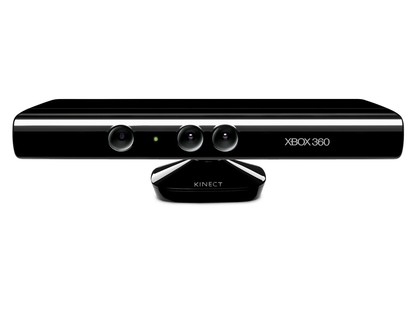
Microsoft made some big moves on all fronts in 2010 with Office 365 making its first appearance to change the way the productivity suite is used in future and Lync 2010 took over from Office Communicator as the enterprise communication platform of choice in November.
The Kinect add-on for the Xbox 360 changed the way its games were consumed when it was released in June. On the product front it also released Windows Phone 7 for the first time in October, followed by an ARM-friendly tablet OS in December and a few tweaks to the Office lineup came in the release of Office 2010 in June.
Over in the courtroom, Microsoft kicked off its patent litigation against Motorola in 2010 when it accused Android devices built by Motorola of infringing on various patents that ended up rolling on until Google took over Motorola.
All in all it reported back on a fiscal 2009 that saw profits rise 35% thanks to Windows 7's release.
2011
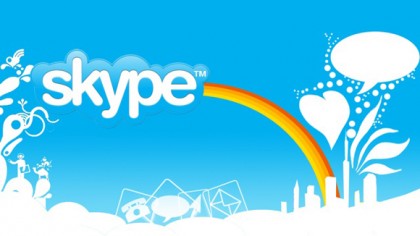
Five months into the year Microsoft splashed out an eye-watering $8.5 billion (around £5.7 billion, or AU$11.1 billion) on Skype and it was around the same time that rumours started to emerge once more that Microsoft was ready to re-open the chequebook in its pursuit of Yahoo.
Nokia and Microsoft first began to work together on the Windows Phone OS in February and another big stride in the platforms arena came in September when the Start menu-less Windows 8 OS was unveiled. All of this was against a backdrop of record revenues of $69.94 billion (around £46.4, or AU$90.5 billion) for the fiscal year 2011 that came as a result of buoyant Xbox 360 sales.
It wouldn't be a Microsoft year without some kind of courtroom drama and in March it filed a complaint with the European Union accusing Google systematically stopping competitors in the internet search sector.
2012
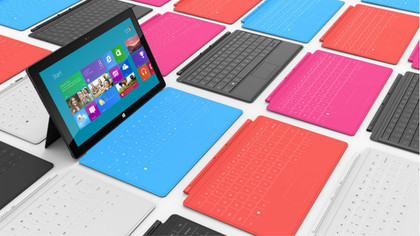
Microsoft announced the dubious honour of its first ever quarterly loss in July when it took a hit of $6.2 billion (around £4.18 billion, or AU$8.15 billion) on its failed acquisition of aQuantive in 2007 and it meant a loss of almost $500 million (around £338 million, or AU$654 million) for Q2 2012. Shortly after this Apple passed Microsoft as the "most valuable company ever" and it remains ahead of Microsoft to this day.
The first of its Surface range of tablet PCs debuted on October 26 alongside Windows 8 with the Surface RT running a specially designed version of Windows 8 and 8.1 that used a 32-bit ARM architecture.
It kissed goodbye to Hotmail this year as Outlook.com replaced it and Windows Live Messenger was also retired thus bringing an end to the popular messaging service of the 1990s. On June 12 it splashed out some $1.2 billion (around £810 million, or AU$1.58 billion) in cash on Yammer, an enterprise social networking service that was eventually built into Office.
2013
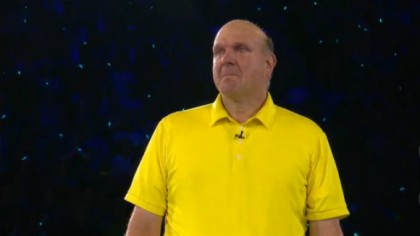
Microsoft ramped up its mobile efforts by acquiring Nokia's mobile devices business for some €5.4 billion (around £3.9 billion, $5.8 billion, or AU$7.6 billion) on September 2, in a deal that also allowed it to license Nokia's patent portfolio for 10 years. Another part of its future strategy involves the Surface range of tablet PCs and after taking a huge $900 million (around £607 million, or AU$1.1 billion) write down on the Surface RT, it released the more successful Surface 2 line.
Another momentous day took place in August when Steve Ballmer relinquished the keys to the CEO role at Microsoft and set in motion the events that would see Satya Nadella take on the role early the next year.
Windows users welcomed back the start menu on October 17 when Windows 8.1 (codenamed Blue) was released to consumers and the update came not even a year after the original Windows 8 was first outed.
Microsoft kicked off its second games console battle against Sony's PlayStation 4 by debuting the Xbox One on November 22, a week later than its rival in North America but a week earlier in certain EU countries.
Talking of the EU, Microsoft was fined €561 million (around £406 million, $602 million, or AU$791 million) on March 6 after it was accused of failing to give users choices a web browser as per an earlier legally binding commitment it made way back in 2009. Even so, it still managed to pump profits up by 17% ahead of Nadella's arrival in the hot seat in 2014.
2014

The seas of change were well and truly flowing during Microsoft's 39th year as Satya Nadella was confirmed as the new CEO on February 4 and he immediately went about changing the way the company operates. He decided that instead of devices and services it would now focus on "platforms and productivity" and his early success will be defined by Windows 10, which was unveiled in September.
Nadella wasn't beyond courting controversy in his early days and the 18,000 lost jobs are a testament to that yet purging 14% of the firm's workforce will deliver savings in the long run.
Windows XP breathed its final breath as a safe OS on April 8 when the end-of-life passed, however, it didn't stop the likes of the UK government from paying millions for an extra year's support.
The Surface Pro 3, which is the latest Microsoft hybrid tablet-PC, was its best outing yet as it sold at twice the rate of its predecessor and drew favourable comparisons with the Apple MacBook Air. Nokia branding was ditched from the Lumia range in October following and this followed the release of Windows Phone 8.1 in April.
Outgoing CEO Steve Ballmer said his final goodbyes in August and went on to buy the NBA franchise Los Angeles Clippers and Microsoft splashed out $2.5 billion (around £1.6 billion, AU$3.1 billion) on Mojang, the developer of Minecraft.
2015
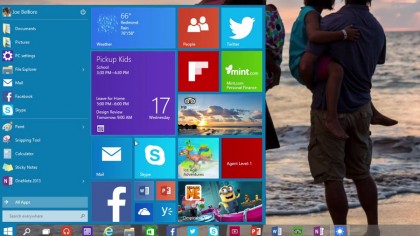
We're a little over a third of the way into 2015 yet Microsoft has made some huge moves already with arguably its biggest still to come in the form of Windows 10 later on this summer.
January was an epic month when it was confirmed that Windows 10 would be free for a year for everyone and the revolutionary HoloLens gave its first virtual reality demonstration and you get the feeling that Windows 10 will truly be the make or break moment for Nadella.
It also began to develop a strategy that is geared towards cross-platform productivity by developing new apps such as Outlook for mobile devices based on the app designed by Accompli, a startup they acquired in 2014. Microsoft also unveiled an incredibly cheap range of Lumia devices and with those devices also running on Windows 10, it's an exciting time to be watching what Nadella et al are getting up to.